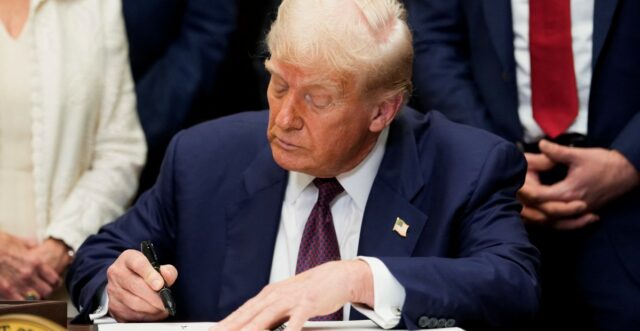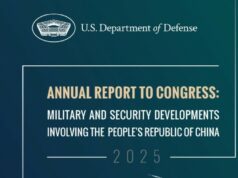
The United States has announced that 25% tariff on all Indian-origin goods will come into force on August 7. A move seen as one of the most severe trade actions the U.S. has taken against a strategic partner in recent years.
President Trump signed the executive order on Thursday. It includes no product- or sector-specific exemptions for India, unlike concessions granted to other trading nations. The flat tariff applies uniformly across categories, regardless of their criticality or existing trade volumes.
India Singled Out
Trade experts and industry observers say this measure represents more than just a tariff hike; it’s a strategic pressure tactic.
“This is not just a trade measure; it’s a geopolitical lever,” said Ajay Srivastava of the Global Trade Research Initiative (GTRI). “Unlike China and several U.S. allies who retained exemptions for sectors like pharmaceuticals and semiconductors, India has been denied all such relief, signalling a targeted push to compel India into trade concessions.”
India’s reluctance to open up sensitive sectors, particularly agriculture and energy, is believed to be a major sticking point in negotiations. The U.S. administration also cited India’s continued oil trade with Russia as a contributing factor.
No Exemptions, No Relief
While South Korea managed to reduce its exposure through negotiated settlements and China continues to enjoy carve-outs for key goods, India is being subjected to a blanket 25% duty.
Even sectors typically protected in other trade pacts, like finished pharmaceutical products, APIs, smartphones, semiconductors, and energy commodities, are included.
Furthermore, the executive order clarifies that the tariffs are in addition to standard MFN duties, significantly raising the cost of Indian exports entering the U.S. market.
Impact On Indian Exports
According to initial projections, India’s goods exports to the U.S. could drop by over 30% in FY2026—from $86.5 billion in FY2025 to around $60.6 billion.
Sectors with high import content and lower domestic value addition, such as petroleum products ($4.1 billion), smartphones ($10.9 billion), and pharmaceuticals ($9.8 billion), are expected to be hit the hardest.
Transition Period And Transit Relief
Goods already in transit will continue to be charged under the existing lower tariffs, typically around 10% on most items, until October 5, 2025. After this, all imports from India will uniformly face the 25% duty, barring any late-breaking trade agreement.
Signal To Others
Trade experts believe India is being made an example to pressure other nations into compliance.
“The U.S. is using its market access as leverage. This is not about fair trade, it’s about strategic alignment,” said Srivastava. “India is being used to send a broader message: Align with U.S. policy priorities or face consequences.”
Global Tariff Landscape
Tariff rates under the executive order range from 10% to 41%, depending on bilateral relationships and perceived national security risks:
- Brazil faces 50%, though sectors like energy and aircraft are exempted.
- South Korea agreed to a 15% rate in exchange for a $350 billion U.S. investment pledge.
- Switzerland has been hit with an unusually high 39% tariff.
- Syria faces the highest tariff at 41%.
In contrast, Canada and Mexico received selective relief under the USMCA, with Mexico granted a 90-day exemption on most tariffs, though tariffs on Mexican metals remain high.




